The Norman Earls of Chester
The Earldom of Chester was created by King William the Conqueror between 1067 and 1070 when he granted it to his follower Gerbod de Fleming. The Earldom's holdings consisted of the city of Chester and large part of the county of Cheshire.
Gerbod the Fleming
The first Earl, Gerbod de Fleming, was the son of one Gerbod, hereditary advocate of the abbey of Saint-Bertin. The family held the lordships of Oosterzele and Sheldewindeke, the overlordship of Arques and territorial rights in Saint-Omer. Gerbod probably fought with William at the Battle of Hastings in 1066. He is recorded as fighting in the Battle of Cassel in February of 1071 in his native Flanders, according to some sources, he was held captive by his enemies after the battle and died a prisoner, others relate that Gerbod, having slain Arnulf III, Count of Flanders in the battle, fled to Rome to seeking attonement for the sin of taking the life of his liege lord and became a monk at Cluny. Which ever was the case, King William gave the vacant Earldom to another of his vassals, Hugh d'Avranches.
Hugh d'Avranches, 'the Wolf' c1047- 1101
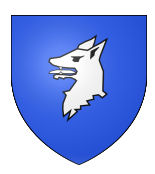 Hugh d'Avranches was the son of a Norman lord, Richard le Goz, Viscount de Avranches and Emma de Conteville. Emma was the daughter of Herluin de Conteville a knight and Herleva, the Conqueror's mother, thus making Hugh William's half-nephew. Prior to his creation as Earl of Chester, Hugh held extensive estates in Normandy and had held Tutbury Castle for William.
Hugh d'Avranches was the son of a Norman lord, Richard le Goz, Viscount de Avranches and Emma de Conteville. Emma was the daughter of Herluin de Conteville a knight and Herleva, the Conqueror's mother, thus making Hugh William's half-nephew. Prior to his creation as Earl of Chester, Hugh held extensive estates in Normandy and had held Tutbury Castle for William.
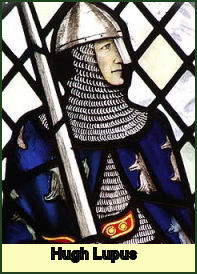 Hugh became engaged in fighting the Welsh, during which time he was given the nickname Lupus, meaning the Wolf, on account of his savage ferocity. He was aided by his cousin, Robert of Rhuddlan, in his campaigns and succeeded in subdueing part of North Wales. Hugh captured and imprisoned Gruffydd ap Cynan, King of Gwynedd. The Welsh prince was held prisoner at Chester Castle and his lands were granted to Hugh's kinsman Robert of Rhudlan. Robert himself was killed fighting the Welsh in 1088 whereupon Hugh took control of his lands, making him the virtual ruler of much of North Wales. Gruffydd of Gwynedd escaped and led a Welsh revolt against Norman rule in 1094, when Hugh lost Anglesey and much of the rest of Gwynedd.
Hugh became engaged in fighting the Welsh, during which time he was given the nickname Lupus, meaning the Wolf, on account of his savage ferocity. He was aided by his cousin, Robert of Rhuddlan, in his campaigns and succeeded in subdueing part of North Wales. Hugh captured and imprisoned Gruffydd ap Cynan, King of Gwynedd. The Welsh prince was held prisoner at Chester Castle and his lands were granted to Hugh's kinsman Robert of Rhudlan. Robert himself was killed fighting the Welsh in 1088 whereupon Hugh took control of his lands, making him the virtual ruler of much of North Wales. Gruffydd of Gwynedd escaped and led a Welsh revolt against Norman rule in 1094, when Hugh lost Anglesey and much of the rest of Gwynedd.
In the summer of 1098 Hugh marched again into Wales, to recover his lands, aided by Hugh of Montgomery, Earl of Shrewsbury, known as 'the Red'. Gruffydd retreated to Anglesey and later fled to Ireland. King Magnus III of Norway, also known as Magnus Barefoot, in alliance with Gruffydd ap Cynan, attacked the Normans to the east of the Menai Straits. Hugh of Shrewsbury was killed in the fighting. A Norse poet relates that Hugh of Shrewsbury was so completely enveloped in armour that nothing could be seen but one eye. "King Magnus let fly an arrow at him, as also did a Heligoland man who stood beside the King. They both shot at once. The one shaft struck the nose-guard of the helmet, and bent it on one side, the other arrow hit the Earl in the eye and passed through his head, and this arrow was found to be the King's." The wheel of fortune having turned once again in his favour, Gruffydd returned from Ireland in 1099 to reclaim his lands.
Owing to excessive gluttony, Hugh earned a second, less flattering, nickname, 'le Gros', meaning the fat. He married the Norman Ermentrude of Claremont, by whom he had sons, Richard, Robert and Hugh and daughters, Matilda, Maud, Helga and Geva d'Avranches, he also produced many illegitimate offspring.
Hugh had regarded the saintly Anselm as his friend, and displayed great liberality to religious houses. He transformed the Chester Cathedral into a grand Benedictine monastery, assisted by Anselm, who later became Archbishop of Canterbury In July 1101, suffering from a fatal illness, he became a monk at the Abbey of St. Werburgh, and died there four days later on 27th July, 1101.
Richard, d'Avranches
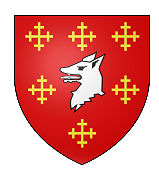 Hugh was succeeded by his seven year old son, Richard.
Hugh was succeeded by his seven year old son, Richard.
On reaching the age of twenty, in 1114, like his father before him, Richard led a campaign into Gwynedd. Together with King Alexander of Scotland, he led an Anglo-Norman army into Wales forming part of a three-pronged campaign under William the Conqueror's youngest son, King Henry I of England. His father's old enemy, Gruffydd ap Cynan, reluctant to meet Henry in battle, paid homage to the English king and paid a fine.
In 1120, at the age of twenty-six Richard, sailing from Normandy with his illegitimate half-brother Ottuel, Richard embarked upon the tragic White Ship with the young William Atheling, the son of Henry I. The vessel's port side struck a submerged rock off Barfleur and the ship quickly capsized. The only known survivor was a butcher from Rouen. Richard left no issue and his Earldom passed to his cousin.
Ranulf de Meschin
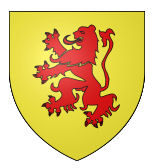 Ranulf de Meschin was the son of the Norman viscount Ranulf de Briquessart and Maud, the sister of Hugh d'Avranches and was born circa 1070 at Briquessart, Livry, France.
Ranulf de Meschin was the son of the Norman viscount Ranulf de Briquessart and Maud, the sister of Hugh d'Avranches and was born circa 1070 at Briquessart, Livry, France.
At the time of his succession to the Earldom of Chester, Ranulf was already a major landowner in England through his marraige to Lucy, heiress of the honour of Bolingbroke in Lincolnshire, who was related to the old Anglo-Saxon nobility. Lucy was probably the daughter of the Saxon Thorold of Lincoln, who was a brother of Godiva, the wife of Leofric, Earl of Mercia.
Ranulf accompanied King Henry I on his invasion of Normandy, in attempt to wrest it from the control of his brother, the Conqueror's eldest son, Robert Curthose in 1106. Ranulf commanded a wing at the Battle of Tinchebrai at which Curthose was captured by his brother and held in lifelong captivity. Either as a reward for the part he played at Tinchebrai, or by right of his wife Lucy of Bolingbroke, Ranulf also possessed the lordship of Carlisle and Cumberland and founded Wetheral Priory in Cumbria, but probably had to give up his lands in the north on becoming Earl of Chester. Ranulf died in January 1129 and was suceeded as Earl of Chester by his son, Ranulf de Gernon.
Ranulf II, de Gernon
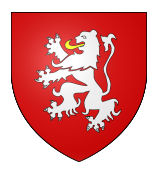 Ranulf was born at the Chateau Guernon, in Normandy, in around 1100. He was the son of Ranulf le Meschin and the heiress Lucy of Bolingbroke.
Ranulf was born at the Chateau Guernon, in Normandy, in around 1100. He was the son of Ranulf le Meschin and the heiress Lucy of Bolingbroke.
On the death of King Henry I in 1136, England's crown was claimed by his nephew Stephen, who usurped the throne from Henry's daughter Matilda, the appointed heir, Matilda had the support of her husband Geoffrey Plantagenet, Count of Anjou and her illegitimate half-brother, Robert of Gloucester. Her maternal uncle, King David I of Scotland, crossed the border into England to also support her claim to the throne. He captured Carlisle, Wark, Alnwick, Norham and Newcastle upon Tyne and marched on to Durham. Stephen arrived to meet him at Durham on 5th February, 1136, and a treaty was negotiated a treaty by which David was granted the towns of Carlisle and Doncaster, for the return of Wark, Alnwick, Norham and Newcastle. Along with Carlisle, much of Cumberland and the honour of Lancaster, lands that had once belonged to Ranulf's father were lost to the Scots. These lands had been surrendered to Henry I in return for the Earldom of Chester. Ranulf was furious at these concessions to the Scots and left Stephen's court in a rage. In the second Treaty of Durham (1139), Stephen granted the Earldom of Northumbria to King David's son, Henry.
Prince Henry of Scotland planned to attend the English court that Michaelmas and Ranulf plotted to seize him on his return to Scotland, however, Stephen's queen, Matilda of Boulogne caught news of the plot against Henry and persuaded her husband to escort the prince back to Scotland. Ranulf, not to be thwarted, seized Lincoln Castle. Agreement was reached with the king, whereby Stephen made William de Roumare Earl of Lincoln and Ranulf was given administrative and military powers over Lincolnshire and the town and castle of Derby. The citizens of Lincoln, disatisfied with the treatment they recieved at the hands of Ranulf, appealed to the king for aid, who marched to Lincoln in January 1141 and laid seige to the castle. Ranulf managed to escape and appealed to his powerful father-in-law, Robert of Gloucester, whose daughter Maud was still besieged at Lincoln, in return he had to agree to support the Empress Matilda. Robert joined forces with Ranulf at Lincoln, the result was that the king was captured by Robert of Gloucester. In the confusion that followed Stephen's capture, Ranulf siezed the Earl of Richmond’s northern castles and took him prisoner.
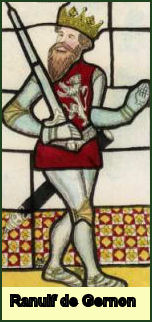 Matilda was proclaimed queen and in September 1141, laid seige Winchester with Robert of Gloucester. Stephen's queen, Matilda of Boulogne, marched to Winchester and surrounded the army of the empress. Robert of Gloucester was captured by the queen trying to fight his way out. Ranulf managed to escape and fled to Chester. Later that year, Robert was released in exchange for Stephen.
Matilda was proclaimed queen and in September 1141, laid seige Winchester with Robert of Gloucester. Stephen's queen, Matilda of Boulogne, marched to Winchester and surrounded the army of the empress. Robert of Gloucester was captured by the queen trying to fight his way out. Ranulf managed to escape and fled to Chester. Later that year, Robert was released in exchange for Stephen.
Since 1141 David of Scotland had switched his alliegence back to Matilda. In 1145, or early 1146, Ranulf switched his allegiance from the Empress to Stephen, allowing him to again resume his old quarrel with David regarding his lands in the north. Ranulf aided Stephen in capturing Bedford and supported him at the siege of Wallingford. He wanted the king to take part in a planned campaign against the Welsh, however Stephen feared treachery and contrived a quarrel with Ranulf at Northampton, after which the Earl was accused of treason, was arrested and imprisoned in chains. Terms were reached on 28 August 1146, when it was agreed that Ranulf would be released, provided he surrendered all the royal lands and castles he had seized (Lincoln included), gave hostages and took a solemn oath not to resist the king in future. Ranulf, as he saw the matter, had been arrested in contravention of the previous oath the king had sworn to him at Stamford, openly revolted on regaining his freedom. He marched to Lincoln to recover the city but failed to break into its north gate. He also tried to recover the castle at Coventry, by building a counter castle. Stephen marched to Coventry and although he was wounded in the ensueing fighting, drove Ranulf back and took hostages, including his nephew Gilbert de Clare, Earl of Hertford, whom Stephen refused to release unless Gilbert surrendered his own castles. Gilbert, similarly angered, agreed to the condition and revolted as soon as he was at liberty.
The young Prince Henry Plantagenet, the son of the Empress Matilda, met the king of Scotland and Ranulf at Carlisle in 1149, Ranulf reached agreement with the King of Scots, The southern portion of the honour of Lancaster, (the land between the Ribble and the Mersey), was conceded to Ranulf, who in return resigned his claim on Carlisle and their allied forces planned an attack on York. Stephen marched north to meet them at the head of a large force forcing the rebels to disperse.
In 1153 Henry Plantagenet granted Staffordshire to Ranulf. In the same year, whilst staying as a guest at the house of William Peverel the Younger, his host attempted to poison him. Three of Ranulf's men who had drunk the wine died, while Ranulf himself suffered agonizing pain. A few months later Henry Plantagenet became England's king on the death of Stephen. He exiled Peverel as punishment but Ranulf succumbed to the poison and died on 16 December 1153. He was suceeded as Earl of Chester by his son Hugh.
Hugh de Kevelioc
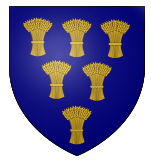 Hugh de Kevelioc was the son of Ranulf de Gernon and Maud of Gloucester, daughter of Robert, 1st Earl of Gloucester, making him the great-grandson of Henry I. He was born in 1147, most probably at Kevelioc in Monmouthshire.
Hugh de Kevelioc was the son of Ranulf de Gernon and Maud of Gloucester, daughter of Robert, 1st Earl of Gloucester, making him the great-grandson of Henry I. He was born in 1147, most probably at Kevelioc in Monmouthshire.
He joined the baronial Revolt of 1173-1174 against King Henry II and was captured and imprisoned after the Battle of Alnwick. His estates were restored in 1177, after which he served in Henry's campaigns in Ireland. In 1169 he married the king's cousin, Bertrade de Montfort of Evreux, the daughter of Simon III de Montfort.
Hugh died on 30 June 1181 at Leek, Staffordshire, and was succeeded as Earl of Chester by his son, Ranulf.
Ranulf de Blondeville
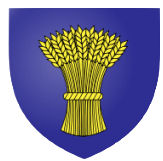 Ranulf de Blondeville was born in 1172 at Oswestry, the son of Hugh de Kevelioc and Bertrade de Montfort of Evreux. He succeeded his father as Earl of Chester at the age of nine.
Ranulf de Blondeville was born in 1172 at Oswestry, the son of Hugh de Kevelioc and Bertrade de Montfort of Evreux. He succeeded his father as Earl of Chester at the age of nine.
He was married at the age of seventeen to Constance Duchess of Brittany in 1189. Constance was the widow of Henry II's son Geoffrey, but the king did not trust her and wanted her married to a magnate whose loyalty he could rely on. The marriage gave Ranulf control of the earldom of Richmond and the duchy of Brittany, but was not a success, Constance openly disliked the spouse that had been forced upon her and the couple separated. In 1196, Constance had a nine year old son, Arthur, by her previous marriage to Geoffrey Plantagenet whom Richard I 'the Lionheart' named as his heir. Richard summoned Arthur and his mother to Normandy. On the journey to Rouen she was abducted by her estranged husband. Richard the Liomheart, enraged at Ranulfs's actions, marched to rescue his nephew. Arthur, however, was secretly taken to the court of the French king Philip II. In 1199, the marriage of Constance and Ranulf was finally dissolved and Ranulf married again to Clemence of Fougeres.
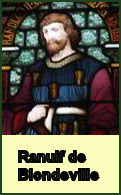 King John, Richard I's brother and successor, did not trust Ranulf and in the winter of 1204-5 suspected him of plotting to revolt with the Welsh and reacted by estates temporarily confiscating some of his estates. Thereafter Ranulf seems to have been loyal to the king, he fought in John's Welsh wars 1209-12, helped secure the peace with the pope in 1213-14 and was also one of the few lords to witness the signing of the Magna Carta in 1215. He remained loyal to John during the civil war when rebel barons had offered the throne to Louis, the heir to the French throne. Louis invaded England during the summer of 1216 and took Winchester. Ranulf aided in the defeat of the rebels at Lincoln in 1217. Following the battle, on 23 May, 1217, he was created Earl of Lincoln by John's son Henry III.
King John, Richard I's brother and successor, did not trust Ranulf and in the winter of 1204-5 suspected him of plotting to revolt with the Welsh and reacted by estates temporarily confiscating some of his estates. Thereafter Ranulf seems to have been loyal to the king, he fought in John's Welsh wars 1209-12, helped secure the peace with the pope in 1213-14 and was also one of the few lords to witness the signing of the Magna Carta in 1215. He remained loyal to John during the civil war when rebel barons had offered the throne to Louis, the heir to the French throne. Louis invaded England during the summer of 1216 and took Winchester. Ranulf aided in the defeat of the rebels at Lincoln in 1217. Following the battle, on 23 May, 1217, he was created Earl of Lincoln by John's son Henry III.
In 1218, Ranulf decided to take part in the Fifth Crusade. The weather, however, affected the crusaders morale greatly, an icy winter was followed by a scorching summer. During September 1219, the Sultan offered terms, Bethlehem, Nazareth, Jerusalem and central Palastine and Galilee, so long as the Crusaders gave up their war in Egypt. Ranulf was in favour of accepting the offer but , Bishop Pelagius, the Patriarch of Jerusalem refused. Damietta was attacked and taken. Discontent was rife in the Crusader camp and Ranulf left Damietta in September 1220, leaving behind an indecisive force under the command of Bishop Pelagius and the Military Orders. The crusade was not a success and he returned to England.
On his return from crusade Ranulf founded Beeston Castle, known as the 'Castle on the Rock'. The outer bailey was roughly rectangular in shape, with 6 feet (2 metre) thick walls. The walls, sections of which still remain today, contain a number of D-shaped towers, an innovation in English castles at that time. He led an army into Poitou in 1230-1, in support of Henry III's ill fated attempt to regain the lost Plantagenet lands in France. The campaign concluded in a three year truce with the French King.
Ranulf de Blondevile died on 26 October 1232 at Wallingford, at the age of sixty. His various estates were divided between his sisters Matilda, Mabel, Agnes, and Hawise. The earldom of Chester passed to the Scottish House of Dunkeld, through his oldest sister Matilda.
John the Scot
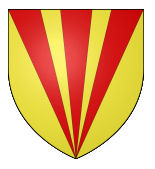 John the Scot was born circa 1207, the son of David of Scotland, Earl of Huntingdon and Matilda of Chester, daughter of Hugh de Kevelioc, 5th Earl of Chester. On the death of his l uncle, Ranulf de Blondeville on 26 October 1232, the Earldom of Chester was inherited by John's mother Matilda of Chester, who was Ranulf's eldest sister. Matilda gave an inter vivos gift of the earldom to her son John who became Earl of Chester by right of his mother. He became Earl of Chester in his own right six weeks later on the death of his mother in January 1233.
John the Scot was born circa 1207, the son of David of Scotland, Earl of Huntingdon and Matilda of Chester, daughter of Hugh de Kevelioc, 5th Earl of Chester. On the death of his l uncle, Ranulf de Blondeville on 26 October 1232, the Earldom of Chester was inherited by John's mother Matilda of Chester, who was Ranulf's eldest sister. Matilda gave an inter vivos gift of the earldom to her son John who became Earl of Chester by right of his mother. He became Earl of Chester in his own right six weeks later on the death of his mother in January 1233.
John the Scot died at the age of thirty, with no issue, on 6 June 1237, leaving his four sisters as his co-heirs. The sisters came to an agreement to share the estates between them, and to make the husband of the eldest sister Christian, William de Forz, Earl of Chester and Huntingdon by right of his wife. However King Henry III intervened and decided that the earldoms should be annexed to the crown.
Back to the Cheshire History Menu
